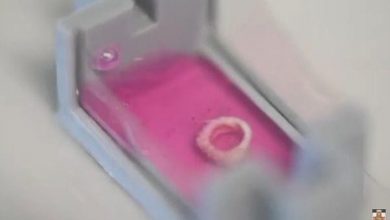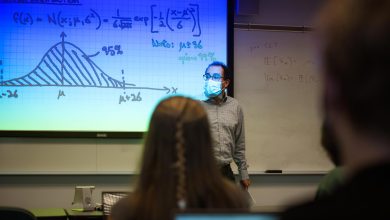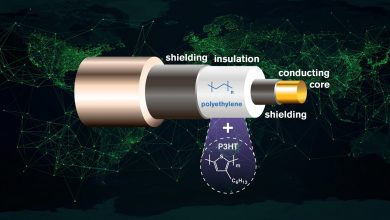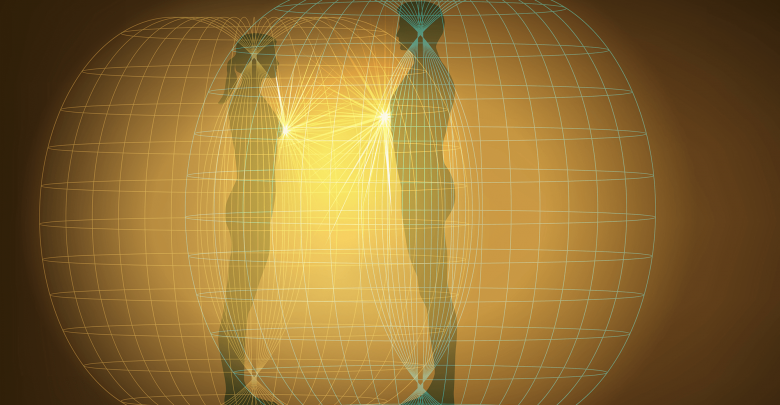
TikTok users have uncovered a bewildering CIA report from nearly four decades ago which describes the agency’s belief that humans can transcend space and time using a technique called the Gateway Experience.
@abby_careyyy It’s about time this is general knowledge #mystery #gateway #cia #research #learnontiktok #fyp #foryoupage #gatewayprocess #monroeinstitute #explained
The report entitled Analysis and Assessment of The Gateway Process was penned in 1983 by US Army Lieutenant Colonel Wayne M McDonnell.
McDonnell described the Gateway Experience as ‘a training system designed to bring enhanced strength, focus and coherence to the amplitude and frequency of brainwave output between left and right hemispheres so as to alter consciousness, moving it outside the physical sphere so as to ultimately escape even the restrictions of time and space’.


In simpler terms, the Gateway Experience uses sounds tapes to manipulate brainwaves with a goal of creating an altered state of consciousness in which a person can interact with nonphysical aspects of reality.
Practical uses of the technique, according to the CIA report, include manifesting goals, converting energy to heal one’s body, and even traveling across space and time to access new information.
McDonnell’s report concluded that the Gateway Experience is in fact ‘plausible’ in terms of physical science, and that it could potentially have practical uses in US intelligence – but that more research was needed to expound upon his preliminary findings.
The report was quietly declassified by the CIA in 2003 and largely went unnoticed. Nearly two decades later, the Gateway Experience is now receiving renewed attention after piquing the interest of TikTok users.
It’s unclear how the report suddenly grabbed TikTok recognition, but over the past month dozens of users have recorded videos explaining the Gateway phenomenon and sharing their attempts to access it using tapes available for purchase online.
McDonnell was commissioned to explore the Gateway Experience in the 1980s, at a time when US intelligence agencies were deeply interested in various forms of psychic research.
CIA records suggest that the fascination was driven in part by the belief that the Soviet Union was conducting their own research into whether psychokinesis and extrasensory perception (ESP) could be used for espionage purposes during the Cold War.
More specifically, the Gateway project was rooted in a wider curiosity about ‘out-of-body experiences’. That term was coined by a radio broadcasting executive named Robert Monroe, who began studying the effects of sound on human consciousness in the 50s.
In 1975, Monroe’s company, Monroe Industries, registered patents for an audio technique called ‘Hemi-Sync’, short for hemispheric synchronization.
Monroe claimed that the technique could create an altered state of consciousness by using sound waves to synchronize brainwave output in the left and right hemispheres of the brain.
Those sound waves, manufactured by the Monroe Institute, are still available today on Amazon starting at $969.
McDonnell’s team of researchers, which included famed bioengineer Itzhak Bentov, used Hemi-Sync tapes and other relaxation techniques in their assessment of the Gateway Experience.
McDonnell opened his report with a brief letter laying out how he used objective scientific methods to understand and explore the Gateway Experience, with a goal of determining practical uses for the CIA.
He seemed to acknowledge the fact that his intended audience might be wary of his findings, and emphasizes that understanding them will require not only left-brain logic, but also right-brain intuition.
The multi-pronged analysis included the following components:
- Biomedical models to understand the physical aspects of the Gateway process
- Quantum mechanics to explain the nature and functioning of human consciousness
- Theoretical physics to explain the character of the time-space dimension and the means by which it could be transcended by expanding consciousness with the Gateway process
- Classical physics to translate the ‘out-of-body experience’ into the language of physical science
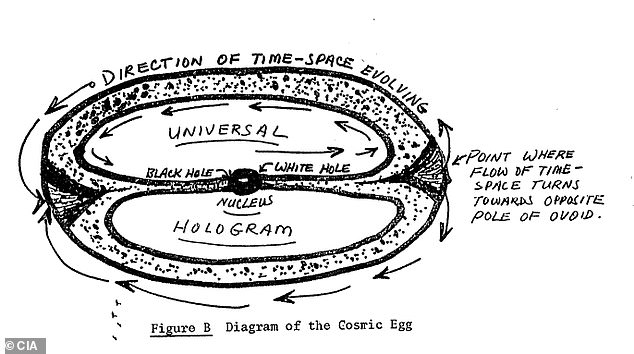
In the first section after the introductory letter, McDonnell lays out three main consciousness-altering techniques – hypnosis, transcendental meditation, and biofeedback – with the purpose of explaining how they compare to the Gateway Experience.
McDonnell asserts that grasping those three techniques can help lay the groundwork for achieving the Gateway Experience.
The key difference between those techniques and the Gateway Experience is that the latter requires creating Hemi-Sync – a state of consciousness in which the frequency and amplitude of electrical brain patterns in both hemispheres are equal.
In the report McDonnell points to the Monroe Institute’s definition of Hemi-Sync and mentions a few studies on the tapes the institute marketed as being able to create it.
He also presents a metaphor that Monroe researcher Melissa Jager came up with to explain how Hemi-Sync works. Jager likened the brain’s normal state to a lamp diffusing energy out to a limited depth. When both hemispheres’ electrical patterns are brought to the same frequency and amplitude with Hemi-Sync, Jager said, the brain can concentrate energy into a ‘disciplined beam of light’ like a laser.
McDonnell then explains how Hemi-Sync is actually achieved with what he calls a Frequency Following Response (FFR), ‘which means that if a subject hears a sound produced at a frequency which emulates one of those associated with the operation of the human brain, the brain will try to mimic the same frequency by adjusting its output’.
The brain operates at a Beta frequency when a person is fully awake, and at a Theta frequency when they are sleeping. With FFR, researchers can trick the brain into shifting from Beta into Theta by introducing an external Theta frequency.
Hemi-Sync employs FFR in a slightly more complicated way – introducing a frequency in the left ear that is 10 Hertz higher than the one introduced in the right ear.
The brain reconciles the opposing frequencies by settling on a single level between the, called a ‘beat’ frequency.
When a beat frequency is reached with Hemi-Sync, the left hemisphere is relaxed, the body goes into a ‘virtual sleep state’ and the brain patterns in both hemispheres align, creating the potential for the subject to alter their own consciousness, according to McDonnell.
The virtual sleep state created by Hemi-Sync simultaneously lowers the subject’s heart rate, amplifying the frequency of brainwave output and creating a ‘vibrational system’ throughout the body that matches the energy continuum of the earth.
McDonnell writes: ‘By resonating the the earth’s electromagnetic sphere the human body creates a surprisingly powerful carrier wave to assist the mind in communication activity with other human minds similarly tuned’.
In other words, if two people reach that energy level at the same time, they could communicate with each other inside of it.
The report then progresses into a more abstract explanation of how consciousness is created through the brain’s processing of energy in the physical world and transforming it into what McDonnell compares to a hologram.
McDonnell portrays the universe as ‘one gigantic hologram of unbelievable complexity’. The universal hologram is made up of interacting energy fields in motion and at rest, and contains all phases of time – past, present and future.
Holograms formed by the human mind are ‘attuned’ to the universal hologram, McDonnell asserts, with the right hemisphere receiving energy from the universal hologram and the left hemisphere translating it into what we know as consciousness.
By changing the energy matrix in the brain, the Gateway Experience expands and alters consciousness in a way that allows the mind to perceive and understand ‘ever more’ of the universal hologram, McDonnell writes.
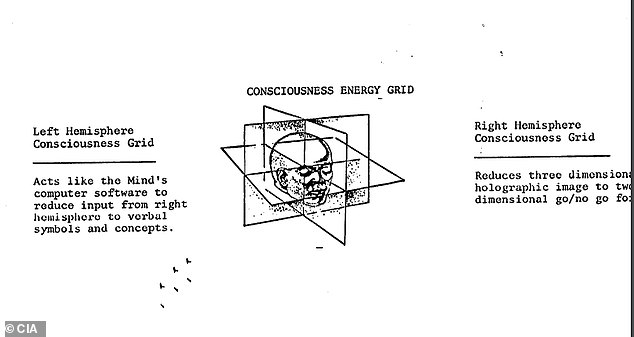
All of the above is explained in the first 10 pages of the 28-page report. On page 13 he presents a troubling reality check: ‘Up to this point our discussion of the Gateway process has been relatively simple and easy to follow. Now the fun begins.’
He goes on to explain how the Gateway Experience can allow a person to transcend time and space if the brain’s frequency reaches a certain level outside the normal range of perception, gaining access to dimensions of the universal hologram that are normally out of reach.
After laying all of that groundwork, Monroe finally outlines the specific steps his research team took with subjects in an effort to reach the Gateway over the course of seven days. Those steps are summarized below:
- Subject is taught to isolate ‘extraneous concerns’ into a visualization device called an ‘energy conversion box.
- Subject is introduced to ‘resonant humming’ on a tape and instructed to mimic the sound.
- Subject repeats a ‘Gateway affirmation’ along the lines of: ‘I am merely a physical body and deeply desire to expand my consciousness.’
- Subject is exposed to Hemi-Sync sound frequencies and encouraged to ‘focus on a develop a perception of and appreciate for those feelings which accompany the synchronization of brainwaves that results’.
- Physical relaxation techniques are introduced as the Hemi-Sync frequencies are expanded to include ‘pink and white’ noise designed to put the body in a virtual sleep state, calm the brain’s left hemisphere and raise attentiveness in the right hemisphere.
- Subject is asked to envision an ‘energy balloon’ extending from the top of the head, around the body, and converging at the feet, where it flows back through the body to the head and out again. The balloon mimics the flow of energy in the universe, and is designed to ‘provide protection against conscious entities possessing lower energy levels which the participant might encounter in the event that he achieves an out-of-body state.
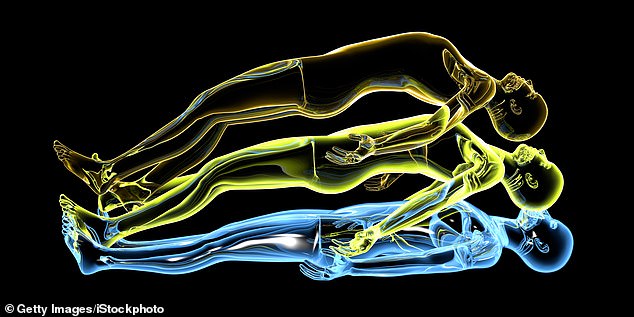
Once a subject masters all of the steps above, they can progress into more exploratory stages of the Gateway experience, wherein they learn how to interact with and manipulate newly-discovered dimensions of awareness.
The techniques employed at this point include:
- Problem solving – Subject projects their problems into their expanded awareness and seeks to solve them by gathering new information from the universal hologram.
- Patterning – Subject focuses on a desired objective and projects it into the universe as if they have already achieved it to ‘establish the basis for actual realization of that goal’.
- Color breathing – Subject imagines colors in a ‘particularly intense and and vivid manner’ within their expanded consciousness to activate the body’s energies.
- Energy bar tool – Subject imagines a pulsating dot and seeks to charge it into an energy bar that can ‘channel force from the universe to selected parts of his body for purposes of healing and revitalization’.
- Remote viewing – Subject transforms their energy bar tool into a ‘whirling vortex’ that allows them to activate their subconscious and imagination.
Finally, McDonnell gets to the time time travel aspect, starting with accessing the past by intensifying the sounds on the Hemi-Sync tapes in what’s referred to as ‘Focus 15’.
Subjects are instructed to imagine time as a wheel with spokes pointing to different parts of their past.
McDonnell writes that less than five percent of all participants were able to successfully travel into the past over the seven-day training period.
‘Nonetheless, Monroe Institute trainers affirm that with enough practice, eventually Focus 15 can be achieved,’ he adds.
‘They also state that not only the individual’s past history is available for examination by the one who has achieved Focus 15, but other aspects of the past with which the individual himself has had no connection with may also be accessed.’
In other words, subjects who achieved Focus 15 were able to see not only their past, but also other people’s.
After reaching the past, subjects are invited to venture into the future with Focus 21. McDonnell did not say how many subjects in his project were able to reach Focus 21, if any, but said it would ‘probably’ take months or years of practice.
The final tape involves ‘out of body movement’, wherein a subject seeks to lift themself out of their physical body when their brainwave pattern and energy levels have reached harmony with their surrounding electromagnetic environment. McDonnell does not state whether any of his subjects achieved this objective.
In a summary of the report, McDonnell concluded: ‘There is a sound and rational basis in terms of physical science parameters for considering Gateway to be plausible in terms of its essential objectives.
‘Intuitional insights of not only personal but of a practical and professional nature would seem to be within the bounds of reasonable expectations.
‘However, a phased approach for entering the Gateway Experience in an accelerated mode would seem to be required if the time needed to reach advanced sates of altered consciousness is brought within more manageable limits from the standpoint of establishing an organization-wide exploitation of Gateway’s potential.’
In other words, McDonnell found that the Gateway Experience is real and possible, but more research was needed to get to a place where the CIA could actually use it.
He then laid out recommendations for how the CIA should go about designing further Gateway studies – though its unclear if the agency ever launched any.
Curiously, one page of McDonnell’s report is missing – number 25 – in the middle of a section where he was outlining potential practical uses of the Gateway.
The omission caught the attention of some readers who launched a Change.org petition calling for the CIA to release it.
The CIA, however, says that it never had the page to begin with – fueling a theory that McDonnell left it out on purpose as a challenge for someone to master the Gateway Experience and seek it out themself.

